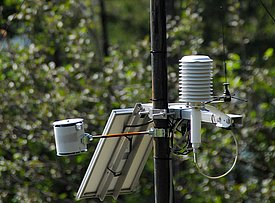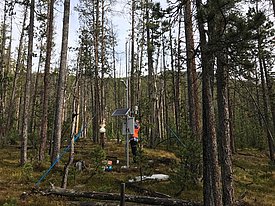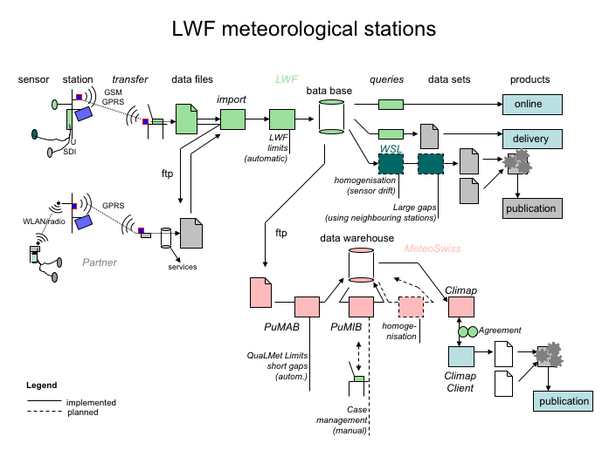In the early days of data collection in the LWF project in 1994, many automatically measured data were compiled manually. Since then, the process has been optimized. The complete automation (e.g., the automatic transmission of measurement data via the telephone network) significantly reduced the amount of work.
LWF data management includes securing raw data, performing initial quality controls, developing and applying online tools for sensor monitoring, forwarding of the data to project partners and storing data in a relational database.
The fully automatic quality control of the measured values is carried out according to preset rules. The quality flags are stored along with the measurements in the database. For example, a limit quality flag indicates that a measured value crosses a hard limit, that a value is constant/varies too much over a period of time, or that there is a gap in the measurement. In addition, manual validation flags are used when we know that a sensor or an instrument was faulty.


